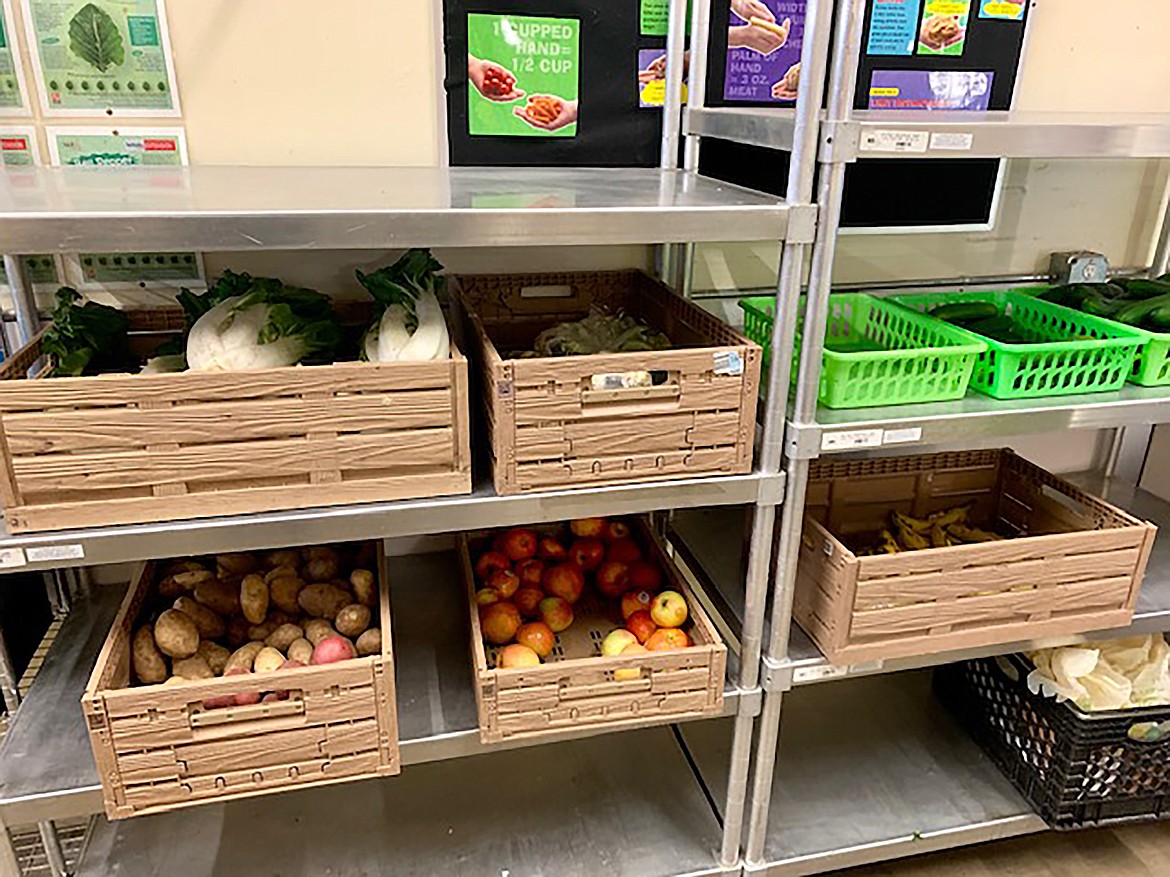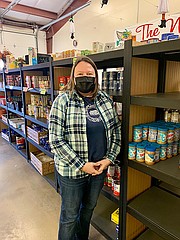Food bank relies on community to help others
▶️ Listen to this article now.
SANDPOINT — Just as at the nation's grocery stores, supply chain issues are creating challenges for local food banks to keep their shelves stocked as well.
"[W]e thought in 2021 we'd see a little relief," Debbie Love, Bonner Community Food Bank executive director, said. "But for the rural areas, it has been a challenge and an educational piece to just understanding the food chain. And how that … when the our local stores are low with food on the shelves, the food bank is going to be as well."
Adding to the challenges was a move by regional food bank Second Harvest to end its food purchase program due to those same supply chain issues, Love said.
By writing a lot of grants and thanks to partnerships with local grocery stores, community donations and support, Love said she is working to navigate the supply chain challenges for facilities in Bonner County. CARES Act funding has helped, as has a national focus on food banks. Through research and talking to other food banks, she's reached out to larger food suppliers and brokers in the Mideast and Southern California — ordering food by the pallet — as well as daily trips to local stores to pick up items near their expiration date.
"We've been trying to be creative on how we can access food to come here to our rural food bank," Love said. "The rural areas have really been hit hard."
While food ordered through Second Harvest also came on pallets, there are more of them now, and more of which need to be stored locally. A third bay was converted to a storage area for pallets and local contacts are letting them store pallets at an overflow warehouse with food brought to the food bank on a weekly basis.
By working with a broker, Love is able to give her budget, what she has on hand and what she needs. They negotiate with suppliers and companies on her behalf and then let her know what they can get and what it will cost, such as a recent purchase of canned chili and stews, she said.
Demand for the food bank again on the upswing after dropping over the summer and in 2020 due to federal programs, Love said. That decline followed heavy use of the food bank at the start of the pandemic coupled with a sharp drop in volunteers.
"In March of 2020, we had a 90% drop in our volunteer base because many of them are in that at-risk stage and so wisely staying home," Love said. "And then we also had a 25% increase in our clients. So it made for the perfect storm where, you know, less volunteers, more client need. And then also some of my staff as well stayed home, they were nervous about it, we didn't know what to expect."
The combination prompted a change in operations, temporarily moving away from its in-store client choice market to distribution of boxes outside. With the weather turning to fall, Love said operations have shifted back inside, with masks required, a limit on the number of clients allowed inside at a time and plastic barriers installed.
The change is seasons also has meant an increase in the number of clients the food bank serves, now sitting at about 1,600 families per month — roughly about the same number as served by the Post Falls food bank, said Love. However, she said it's important to note that the local food bank serves the entire county with distribution sites in Sandpoint and Priest River.
"It seems to be about average for our population, our size, a county our size," said Love.
While demand seems to be spread throughout the county, need is growing on the county's west side as more people move to that area, Love said. Demand has grown from about 150 families a month to about 440, prompting expansion of that community's food bank and changes to how it operates.
In Sandpoint, the food bank is seeing about 10 new families a week with many of them working families with children, many new to poverty, or elders on a fixed income. Many families are facing homelessness due to the housing crisis hitting the area hard. Many of those families are either working multiple jobs, or attempting to find additional jobs in an attempt to make ends meet, Love said.
"It seems to be a broad spectrum [of people needing help] now since COVID is here," Love said. "They're not making ends meet because either rent has gone up or they've lost their home in that manner. And then as Social Security — if we see an increase in Social Security benefits, it seems that in affordable housing, that rent will increase at the same time, so nobody's able to get ahead, essentially. So they're consistently using us on a weekly basis."
While a common misconception says those who use a food bank are lazy, Love said that's far from the case. Most are the working poor or turn to the food bank when they've run out of options.
"We have people coming in all the time not wanting to but they don't have anywhere else to go," Love said. "They're very prideful people, especially the older generation, they, you know, grew up in a time when, during the Depression, or that time when they utilized every little thing. So when they get to that point, they they think, 'Oh, a can of soup is just fine.' But really that's the only thing they have in their cupboard."
Love said she works to get as much fresh produce as she can, with local gardeners helping them stay flush over the summer with an assortment of vegetables. A "grocery rescue program" in which local stores donate items nearing the end of their lifecycle, but still good, to the food bank. A partnership with Litehouse Foods helped create a shopping list potential donors can download from the food bank's website or Facebook page.
The list includes such staples such as peanut butter, tuna fish, canned meat, canned pasta, canned tomato sauce and canned pasta sauce. Other items, such as baking supplies and seasonings, also are welcomed.
The supply chain challenges have also put a kink in the food bank's longstanding Thanksgiving program in which those in need are given a turkey or ham, canned pumpkin, cranberries and yams.
"Our supplier unfortunately cannot fulfill our order this year of turkeys," Love said. "We actually were ordering for Clark Fork as well because the more we can order in bulk, the better price we get. But I got a call from them saying they couldn't make that happen."
Love contacted local grocery stores, who are getting her as many turkeys as they can, but that total, while large — fills just over half of the 800 turkeys needed. That leaves her with about 350 or more turkeys to find in order to be able to help those in need.
Individuals who are able can buy a turkey and donate it to the food bank, with some of the local stores keeping them on site until they can be picked up by the food bank on one of its daily visits. Cash donations also can be made, which will help the food bank buy additional turkeys as well.
Love said most in the community realize that those who turn to the food bank are only doing so because they are desperate with no other avenue left.
"Our clients are lovely people. They are very gracious and thankful for everything that we do," she added. "We really it just feels like family, when you're when you're working here. And our community, it just feels like a big extended family where we all want to make sure everybody's getting fed, those basic needs are being met. Because when those families are getting their basic needs met, they can move on to other things and actually, you know, pay their rent or find a job or keep working, essentially, also be healthy. We want healthy citizens in our community and being able to have the basic food also plays a role in that, too."
Instead of waiting for a handout, Love said the facility's clients are working to help themselves, citing a family who visits the Sandpoint site while in town for medical care. In talking to them, Love discovered they were shopping for multiple other people.
"Transportation is a huge barrier in our area because we're so geographically spread out," Love said. "And I thought, 'Wow, you know, a lot of people will assume that they're a problem, but actually they're problem solving for themselves and they're actually, you know, utilizing the resources they have and working together to be able to meet their needs."
While juggling the challenges and some of the stories can be heartbreaking and "pull at your heartstrings, Love said loves being able to help the community help their friends and neighbors in need.
"Some days are really hard, but I just think that I'm just glad we're here," she said. "I mean, if we weren't here, where would people be? And so I just have to look at it that way."
To donate to the food bank, learn more about its services or find out how to volunteer, go online to foodbank83864.com; or on Facebook, facebook.com/bonnercommunityfoodbank.



